Imagine stepping into your backyard and instantly feeling a wave of tranquility and joy. Whether you’re a beginner dreaming of your first cozy nook or a seasoned homeowner looking to revamp your al fresco area, “12 Outdoor Comfort Ideas for Your Next Project” is your ticket to creating an inviting outdoor haven. This guide brims with innovative ideas that transform ordinary spaces into extraordinary retreats, sparking joy and enhancing your home’s allure.
With this list, you’ll uncover practical tips that cater to every skill level, ensuring you can confidently tackle your next project. From lush, layered seating to strategic lighting that sets the perfect mood, each idea is crafted to maximize comfort and style. Embrace the rewards of a beautifully curated outdoor space and enjoy the endless moments of relaxation and entertainment it brings.
Incorporate Multifunctional Outdoor Furniture
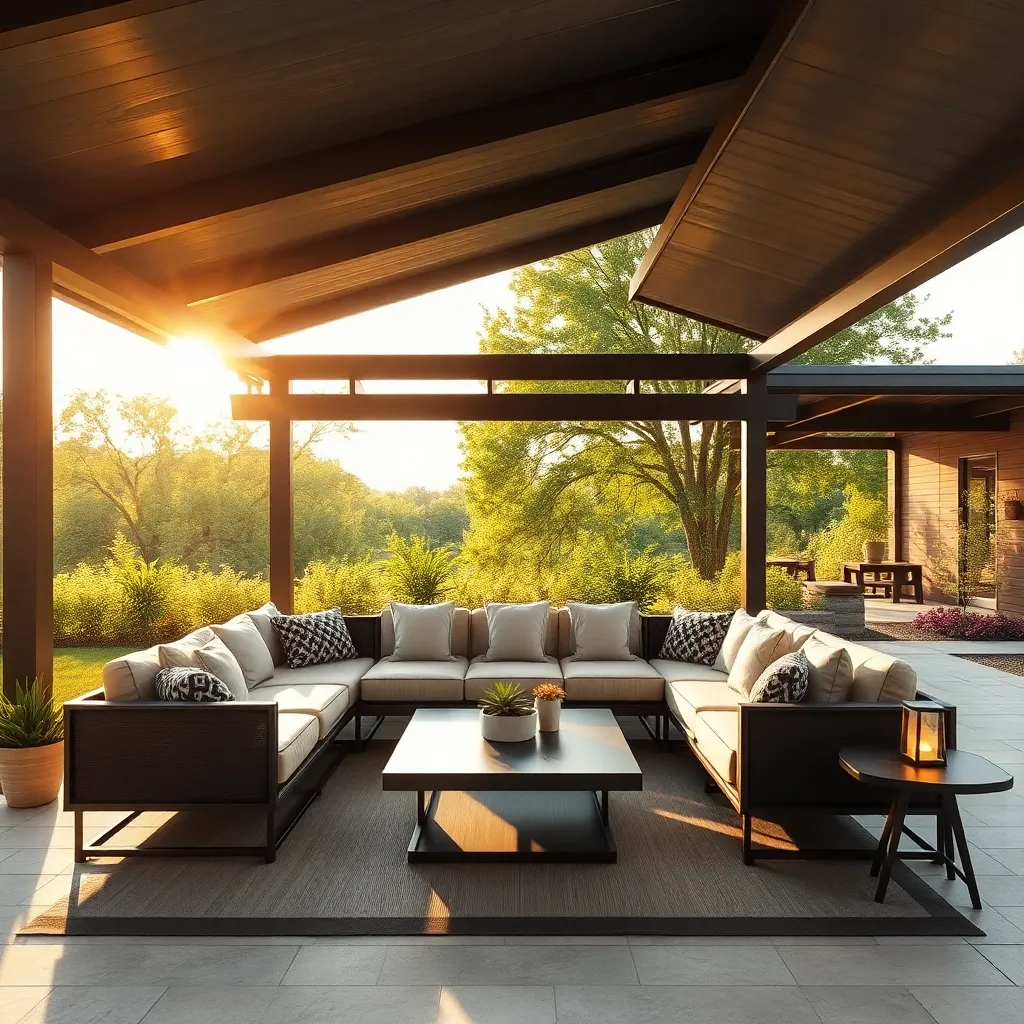
When designing your outdoor shelter, consider incorporating multifunctional furniture that can adapt to various needs and occasions. Choose pieces like benches with built-in storage or tables that can convert into additional seating. Opt for durable materials such as treated wood or weather-resistant metal to ensure longevity. These materials not only withstand the elements but also blend seamlessly into any outdoor setting, providing both utility and style for your space.
For those seeking an advanced touch, consider modular furniture systems that allow you to rearrange and adjust components based on your needs. Invest in furniture with hidden features, such as pull-out sections or adjustable heights, to maximize your shelter’s versatility. Look for items that can easily be moved or expanded, like foldable chairs and extendable tables, which provide flexibility and convenience for both small gatherings and larger events.
Install Adjustable Shade Structures
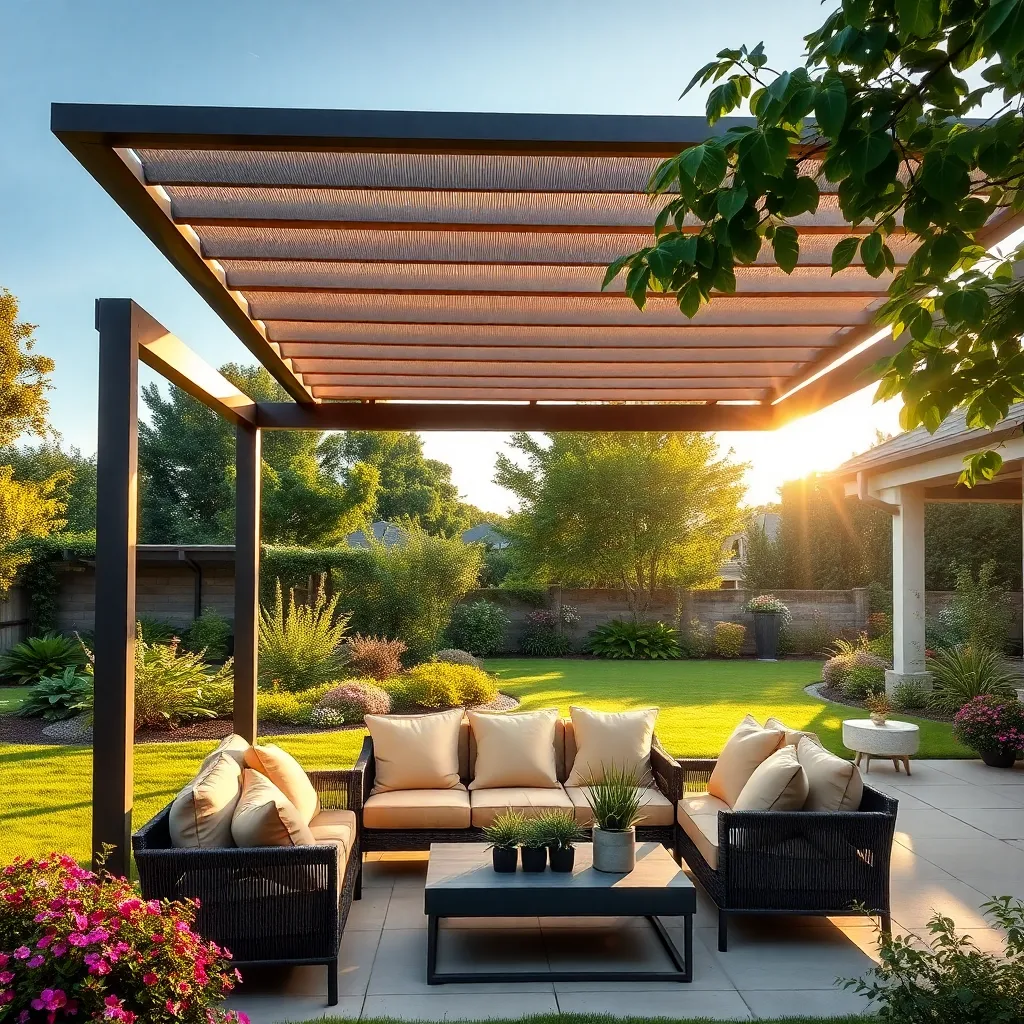
One effective way to enhance outdoor comfort is to install adjustable shade structures that cater to changing weather conditions. Consider using materials like aluminum or wood for a sturdy frame, and opt for adjustable fabric or pergola-style slats that can be tilted to control sunlight exposure. For beginners, a simple retractable awning can provide flexible shading, while more advanced setups might include motorized systems that adjust with a remote control or smart home integration.
When planning your installation, ensure the dimensions of the shade structure are proportionate to your outdoor space to avoid overwhelming the area. It’s recommended to leave at least a two-foot clearance on all sides for optimal functionality. Advanced users might integrate solar panels into the design to power lighting or fans, boosting both comfort and sustainability. Regular maintenance, such as cleaning the fabric and checking the mechanism, will keep your shade structure in peak condition for years to come.
Choose Durable, Weatherproof Fabrics
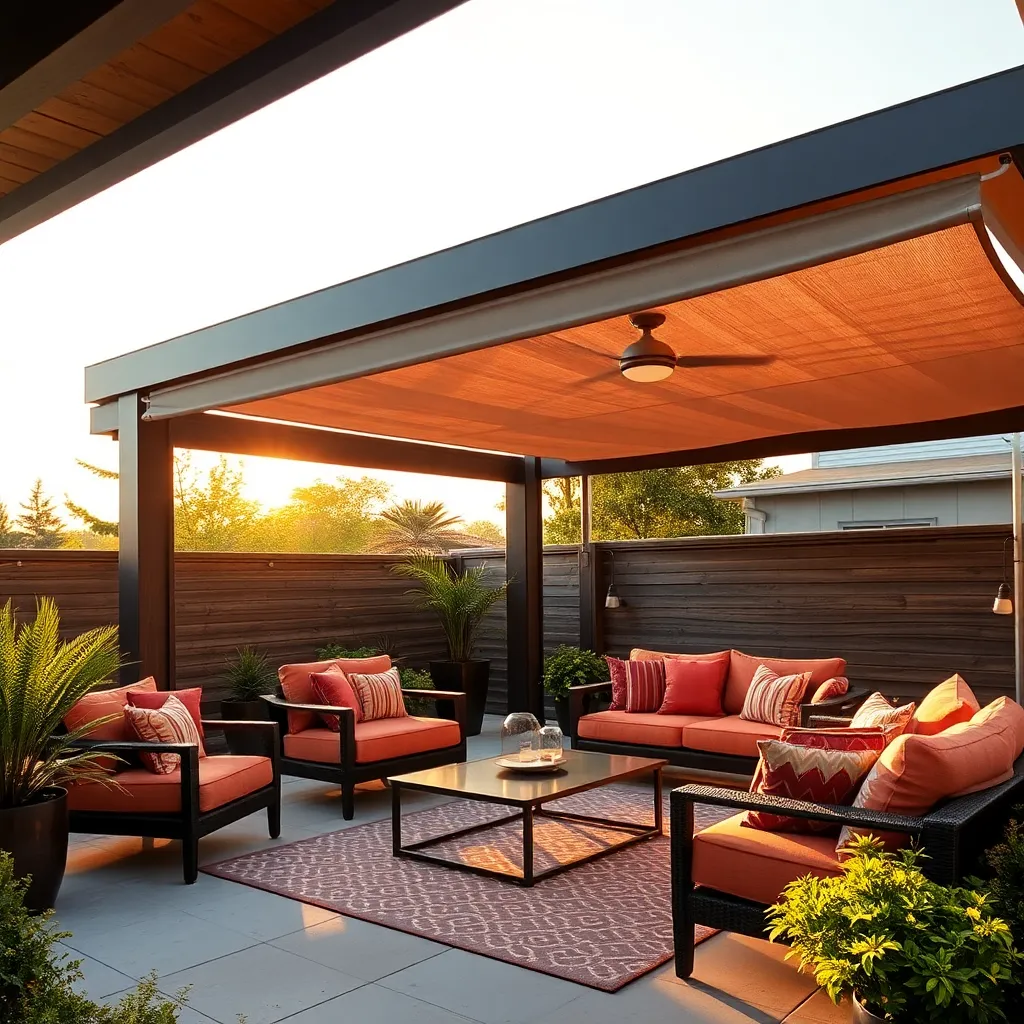
When choosing fabrics for your outdoor shelter, it’s crucial to select materials that are both durable and weatherproof. Look for fabrics like solution-dyed acrylic or PVC-coated polyester, which are known for their resilience against UV rays, rain, and mildew. These materials not only withstand the elements but also maintain their color and form over time, ensuring your outdoor space remains inviting and vibrant.
For those looking to enhance their outdoor design, consider the aesthetic and functional elements of your fabric choice. Opt for a fabric with a minimum weight of 250-300 gsm (grams per square meter) to ensure durability. Additionally, check for a high UPF (Ultraviolet Protection Factor) rating, ideally above 50, to provide optimal sun protection. Advanced users might explore adding a water-repellent finish to their fabric, which can be applied as a treatment to further enhance its weather resistance. This attention to detail ensures that your outdoor shelter not only looks great but also provides a comfortable and protected environment for relaxation or entertaining.
Create Cozy Nooks With Cushions
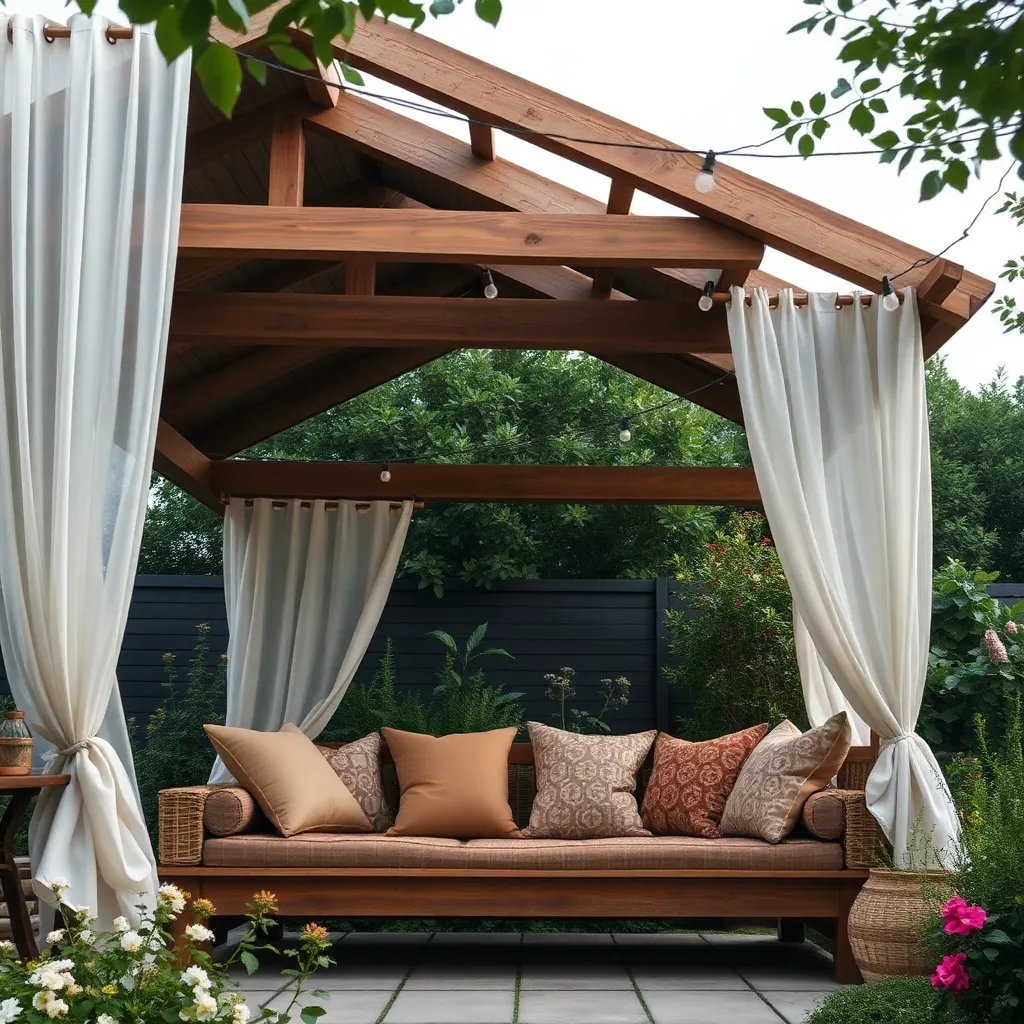
Transform your outdoor space into a welcoming retreat by adding cushions to create cozy nooks. Opt for cushions made with quick-dry foam and covered in weather-resistant fabric to withstand the elements. Arrange them on benches, swings, or even directly on a deck to provide inviting spots to relax. For a personal touch, mix and match patterns and colors that complement your outdoor theme. Beginners can start with a few cushions on a garden bench, while advanced decorators might consider layering textures using throws and pillows for added warmth.
For a polished look, consider the scale and proportion of your cushions relative to the furniture. Large, plush cushions can add a luxurious feel to expansive seating areas, while smaller, firm cushions provide support in more compact settings. Use a variety of shapes—such as square, round, or bolster cushions—to add visual interest. Securing cushions with ties or Velcro can prevent them from blowing away on windy days. Whether you’re creating a reading nook or a conversation corner, well-placed cushions can enhance both comfort and style, making your outdoor area a favorite hangout spot.
Use Natural Elements for Aesthetic Appeal
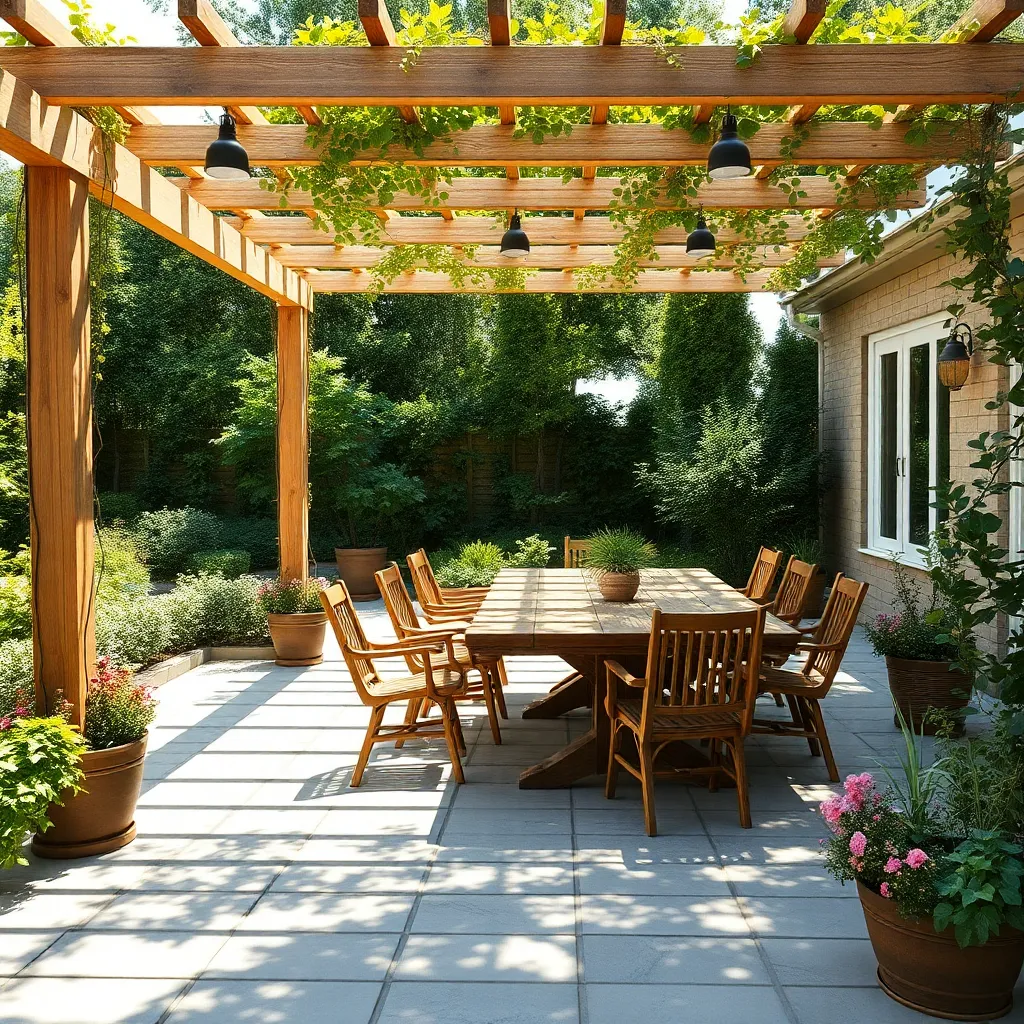
Consider using natural materials like wood, bamboo, or stone to blend your shelter seamlessly into the landscape. A wooden pergola can serve as a beautiful structure that provides shade while allowing vines or climbing plants to weave through its beams, adding both texture and color. For a more rustic look, consider building with reclaimed wood or natural stone, which not only enhances the aesthetic appeal but also offers durability and a sense of timelessness.
For those who want to take it a step further, think about incorporating living elements into your shelter design. A green roof or vertical garden can transform your shelter into a living, breathing part of your garden. These eco-friendly options not only improve air quality but also provide additional insulation, keeping the space cooler in the summer and warmer in the winter. When designing with these elements, ensure proper structural support and waterproofing to prevent any potential damage. By integrating natural elements, you create a serene and inviting outdoor space that feels both cozy and connected to nature.
Add Portable Heaters for Warmth
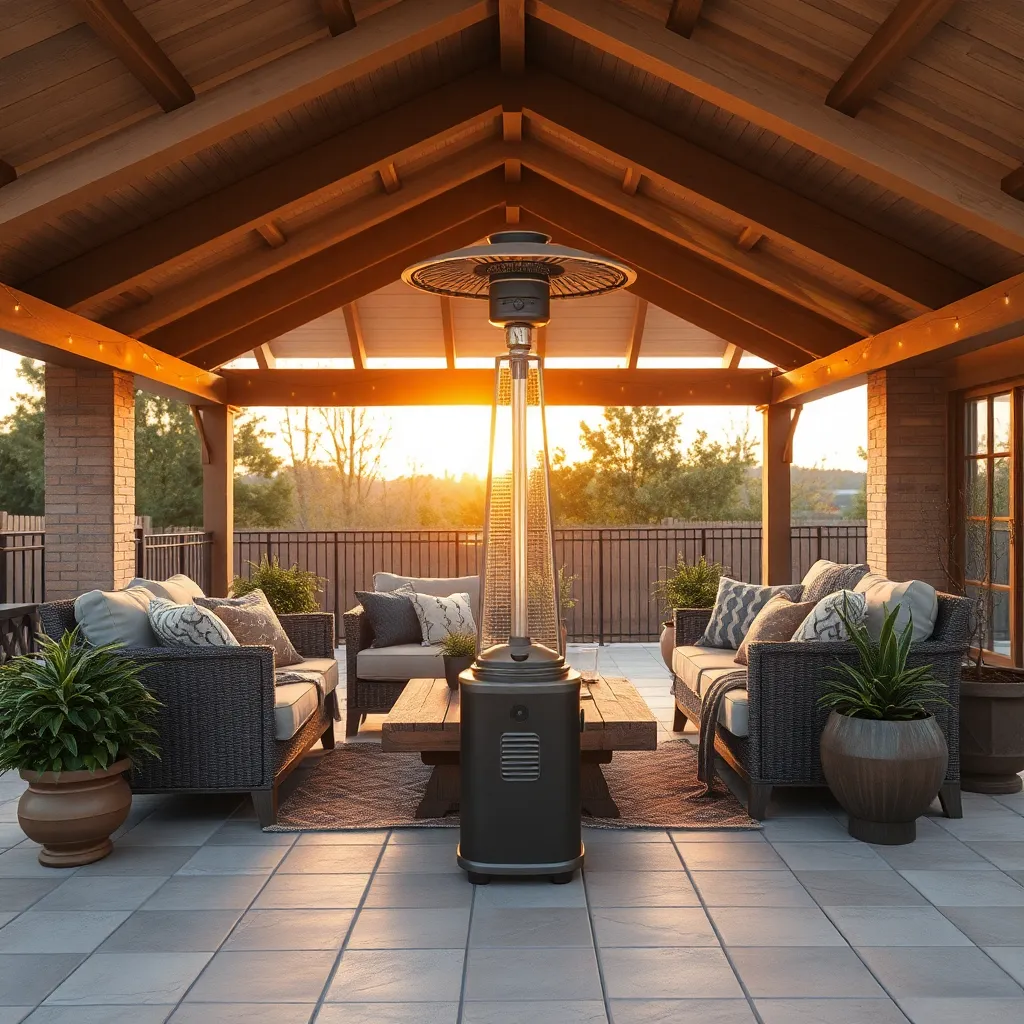
Enhance your outdoor space with the warmth of portable heaters, making it inviting even during chilly evenings. For beginners, consider using propane or electric patio heaters, which are easy to set up and require minimal maintenance. Opt for models with safety features like automatic shut-off and tip-over protection to ensure a safe environment. Place the heaters strategically—such as near seating areas or under covered patios—to maximize their heating effect without overcrowding the space.
For those looking to invest more, consider infrared heaters which efficiently warm people and objects rather than just the air. These can be mounted on walls or ceilings to save floor space and provide a sleek, modern look. When selecting a heater, check its BTU rating or wattage to ensure it matches the size of your outdoor area. For larger spaces, you might need multiple units to ensure even coverage, allowing you to comfortably enjoy your outdoor haven year-round.
Design Windbreaks for Comfort
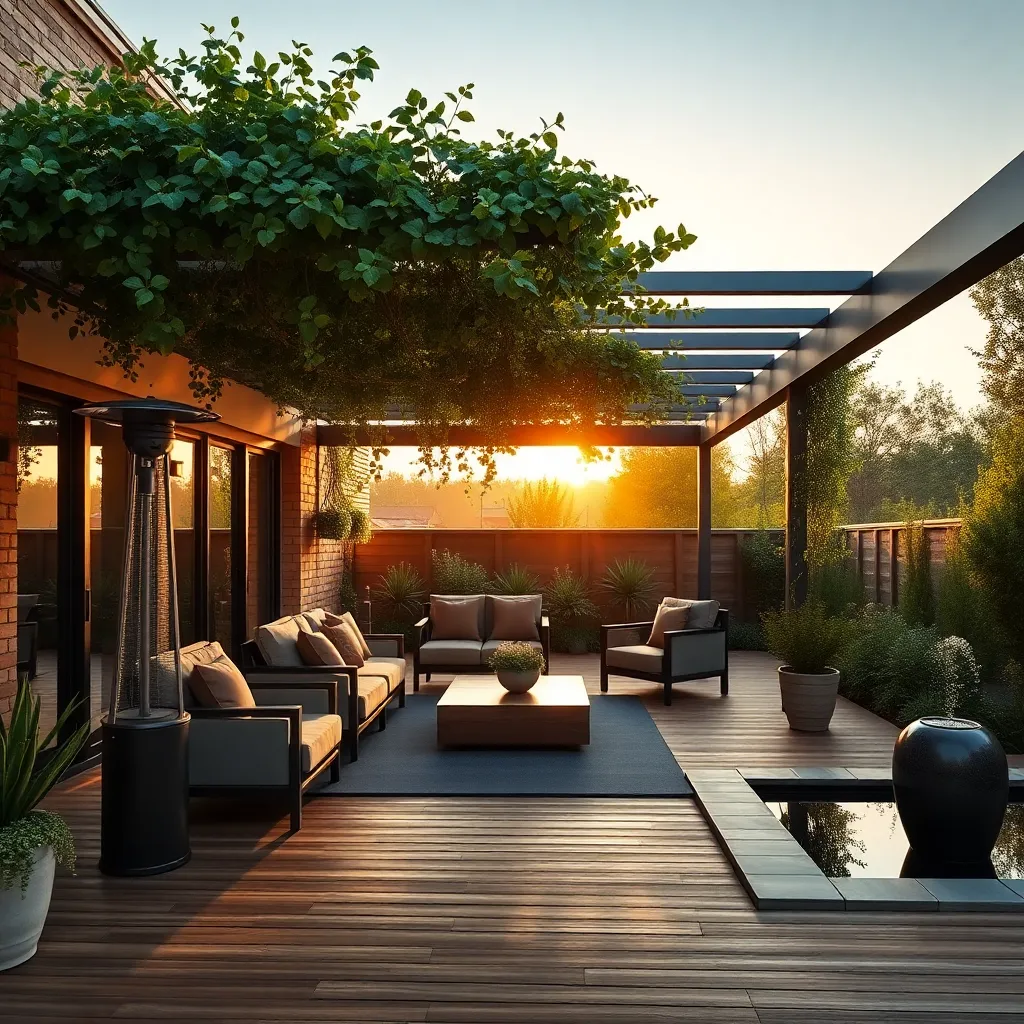
Creating a windbreak can transform your outdoor space into a more comfortable and usable area. Begin by identifying the prevailing wind direction and strategically placing barriers like hedges, fences, or walls to block or redirect the wind. Consider using dense, evergreen shrubs such as junipers or arborvitae, as they provide year-round protection and require minimal maintenance. For a more immediate solution, install a solid fence made from durable materials like cedar or composite wood, ensuring it stands at least 6 to 8 feet high to be effective.
For those seeking a more advanced approach, consider incorporating both natural and structural elements into your design. Layered windbreaks can be particularly effective, combining trees, shrubs, and fences at varying heights. This not only enhances wind protection but also adds visual appeal and biodiversity to your landscape. Use lattice panels or slatted fences for a balance of air flow and protection, reducing wind speed without creating turbulence. By carefully designing your windbreak, you can create a tranquil oasis that enhances the comfort and enjoyment of your outdoor living space.
Integrate Water Features for Ambiance
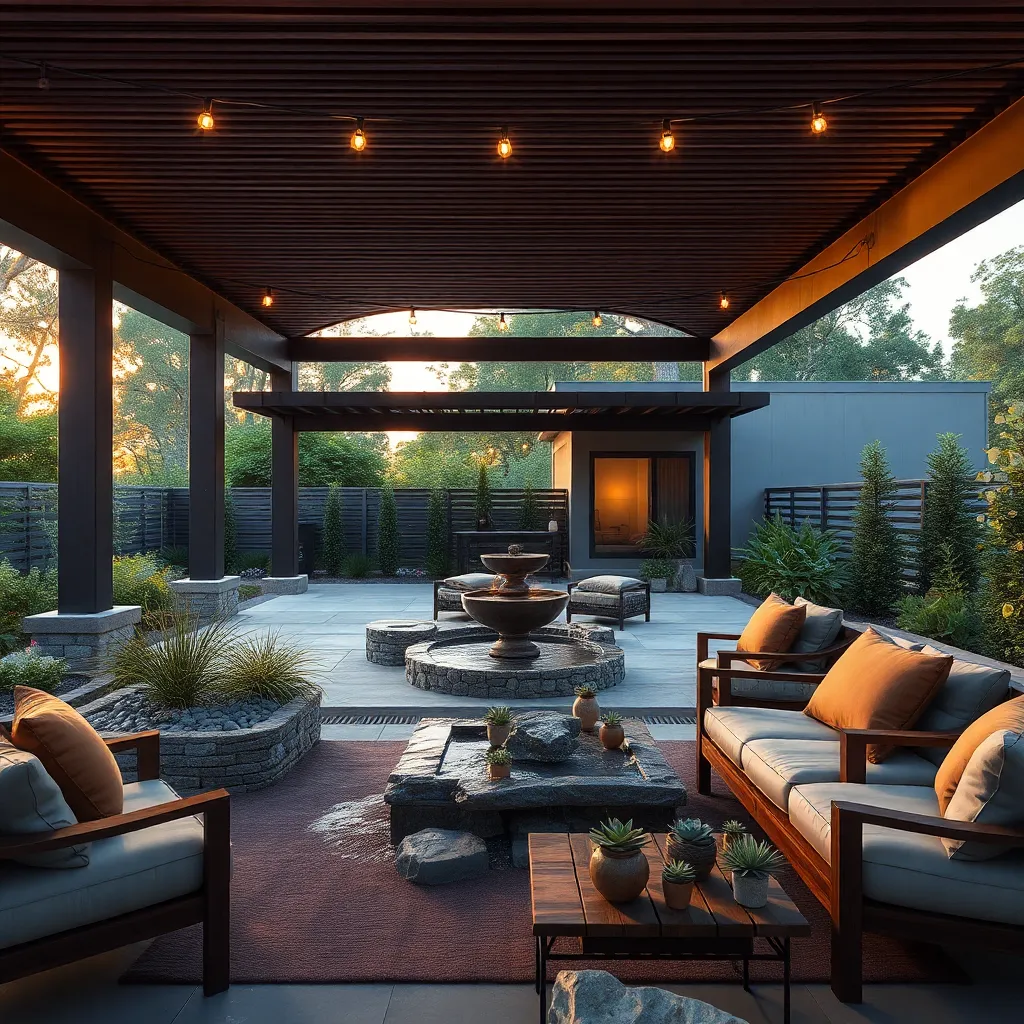
Adding a water feature to your outdoor shelter can significantly enhance its ambiance and provide a soothing backdrop to your outdoor activities. For beginners, consider installing a simple fountain or bird bath, which are both easy to set up and maintain. Choose materials like stone or ceramic for durability and style, and position your water feature where it can be easily seen and heard from your seating area. Ensure the feature is proportional to the space—small spaces benefit from compact designs, while larger areas can accommodate more expansive water structures.
For those ready to take on a more advanced project, consider building a small pond or a waterfall. Use a pond liner to prevent leaks and surround the edges with stones or plants to create a natural look. To maintain water clarity and prevent algae growth, invest in a quality pump and filtration system. Incorporating LED lighting can also add a magical touch, allowing you to enjoy the feature even after dusk. Remember to routinely check and maintain your water feature to keep it functioning at its best and to extend its lifespan.
Install Bug-Repelling Outdoor Lighting
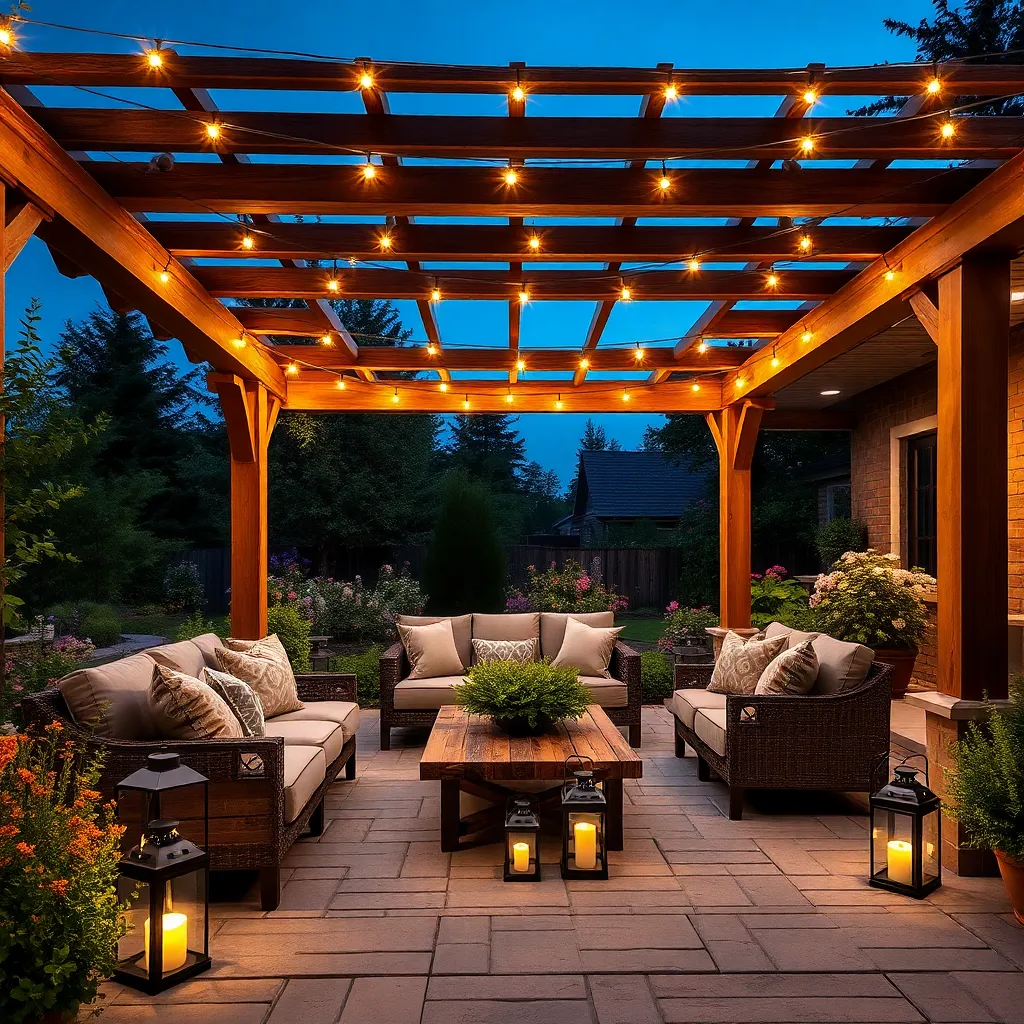
Transform your outdoor space into a bug-free haven by installing bug-repelling outdoor lighting. Consider using LED lights with a warm color temperature, as these are less attractive to insects than traditional white or blue-tinted bulbs. To further reduce the presence of bugs, opt for yellow-tinted LED lights, which effectively repel mosquitoes and other flying pests without the need for harsh chemicals.
For a more advanced setup, integrate motion-activated lights that only turn on when needed, minimizing the attraction of bugs to your garden. Position these lights strategically around seating areas, pathways, and entry points to enhance safety and comfort. When choosing fixtures, look for those with sealed designs to prevent insect intrusion and ensure longevity. This approach not only enhances your outdoor ambiance but also provides a welcoming, pest-free environment for you and your guests.
Opt for Retractable Awnings
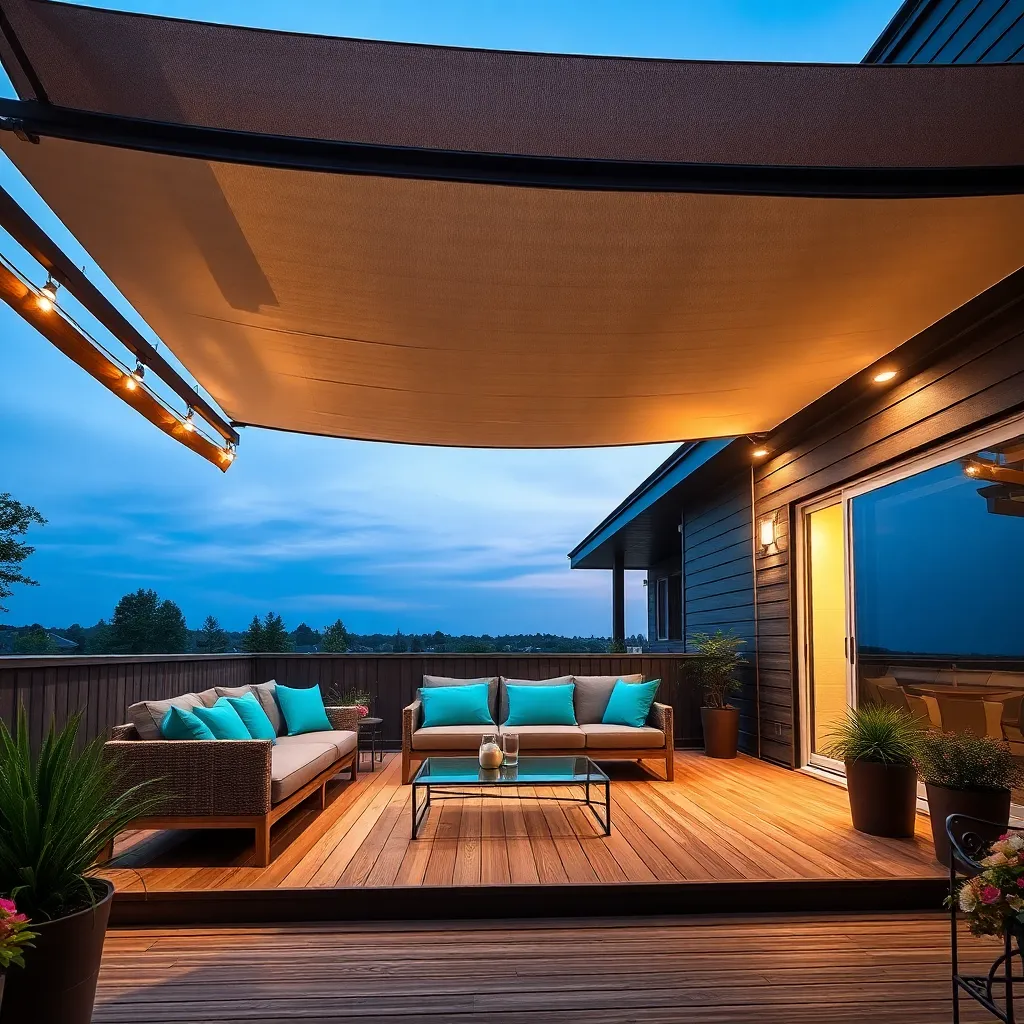
Enhance your outdoor comfort with retractable awnings, a versatile option that offers shade when you need it and open skies when you don’t. These awnings are perfect for creating a dynamic outdoor space, allowing you to control sunlight exposure throughout the day. Choose durable materials like acrylic or polyester fabrics, which are resistant to fading and weathering. For a seamless look, opt for a color that complements your home’s exterior, and consider motorized options for effortless operation.
For a more advanced setup, integrate weather sensors that automatically retract the awning during high winds or heavy rain. This feature not only protects your investment but also ensures longevity. When installing, ensure the awning’s width covers the area you wish to shade, typically extending 8 to 14 feet from the wall. Beginners can start with manual models, while tech-savvy homeowners might explore smart home integration. These features can significantly enhance your outdoor experience, making retractable awnings a smart and stylish addition to any home.
Utilize Vertical Space With Planters
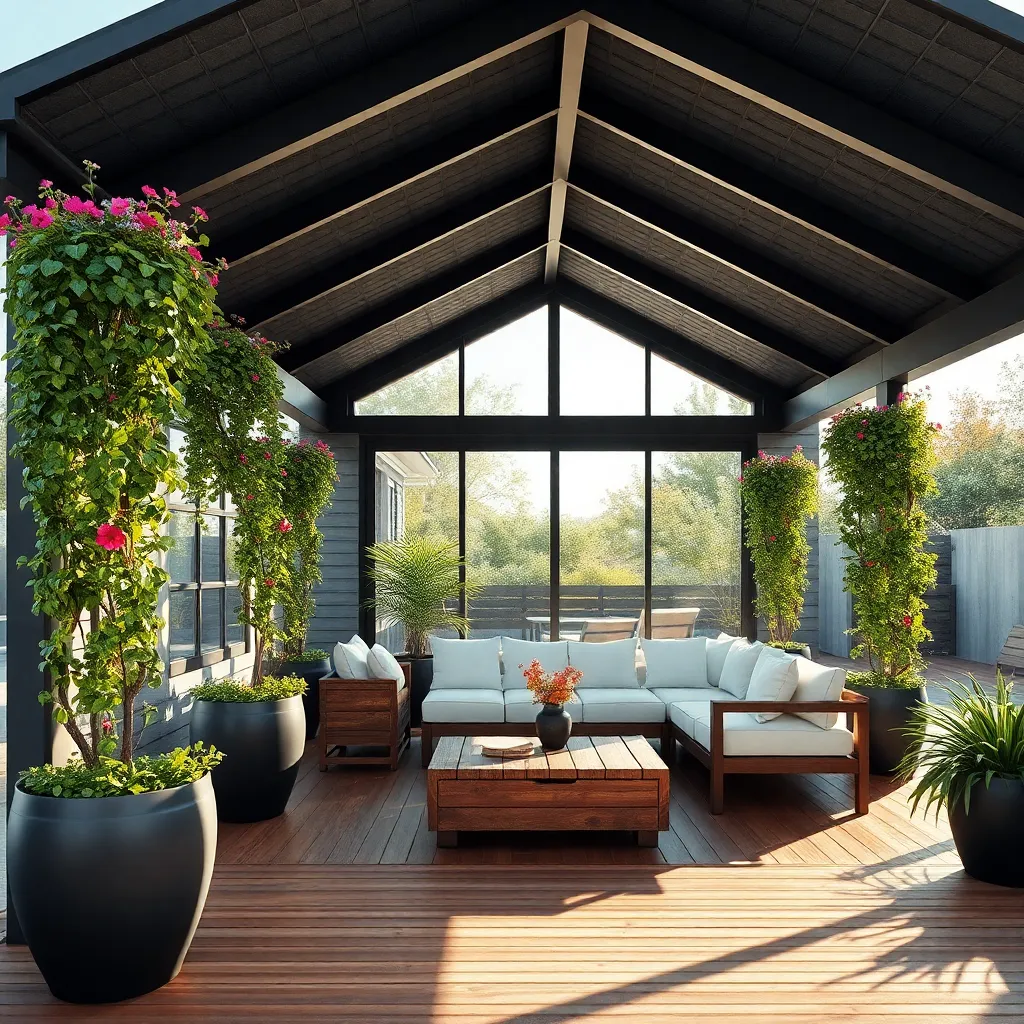
Maximize your outdoor space by integrating vertical planters into your design. These planters not only save space but also create a lush, green backdrop that enhances the ambiance of your outdoor area. Start with a sturdy trellis or vertical frame made of weather-resistant materials like galvanized steel or treated wood to support your plant selections. For beginners, using pre-made vertical planters with built-in irrigation systems can simplify maintenance and ensure your plants thrive.
Advanced gardeners might explore creating a custom vertical garden wall with a mix of potted plants, herbs, and climbers. Choose a variety of plants with different textures and colors to add depth and interest to your space. Be sure to consider the amount of sunlight your wall receives and select plants accordingly—succulents for sunny spots or ferns for shadier areas. Secure pots or planters with brackets or hooks designed to withstand outdoor conditions, ensuring your setup is both beautiful and durable.
Incorporate Weather-Resistant Flooring
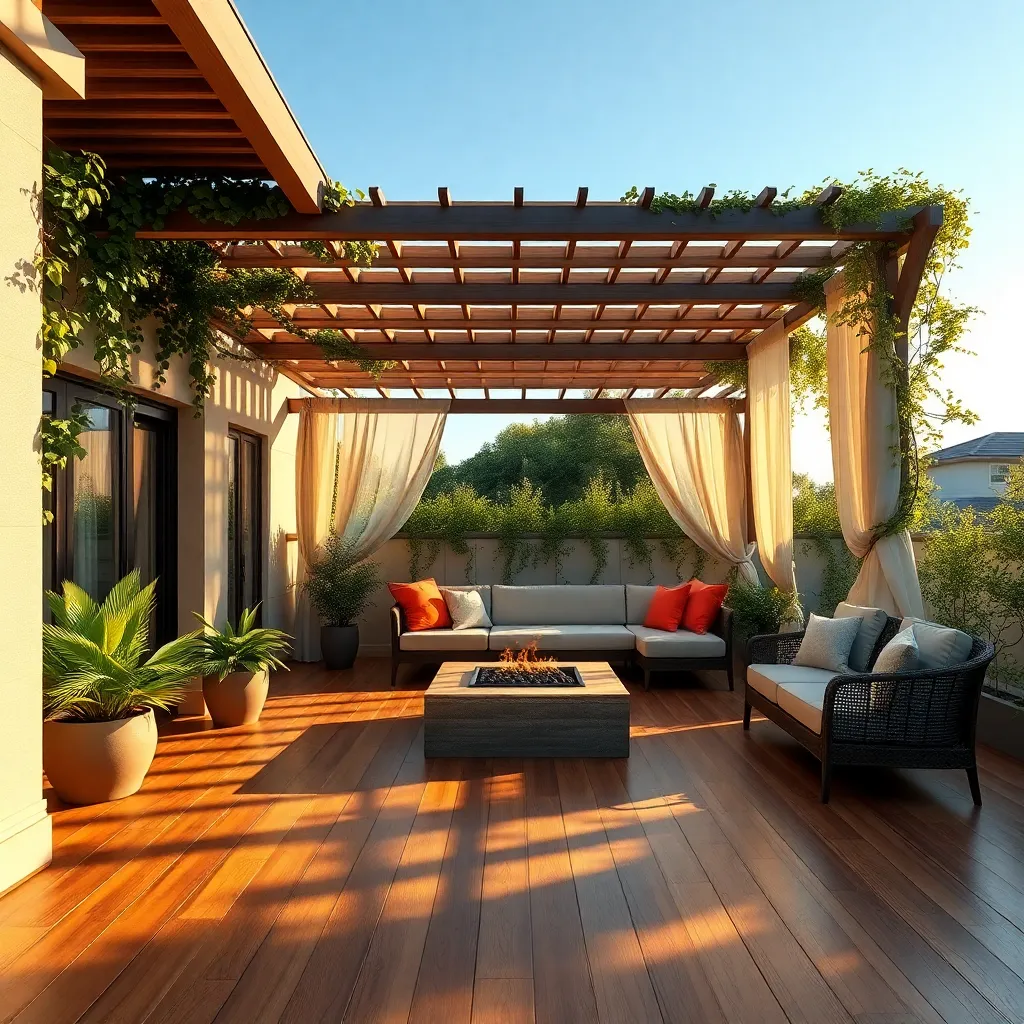
When designing your outdoor shelter, incorporating weather-resistant flooring ensures durability and comfort. Opt for materials like composite decking, which resists water and fading, or porcelain tiles that offer a sleek, modern look while withstanding extreme temperatures. These options provide a stable, easy-to-maintain surface ideal for various climates.
For those seeking a more natural aesthetic, consider using stone pavers or treated wood planks. Stone pavers add a rustic charm and are excellent for drainage. Meanwhile, treated wood offers a classic look but requires occasional sealing for longevity. Ensure proper installation with a level base and adequate spacing to accommodate expansion during seasonal changes.
Conclusion: Creating Beautiful Outdoor Spaces
In exploring the ’12 Outdoor Comfort Ideas for Your Next Project,’ we’ve delved into essential relationship concepts like creating inviting spaces, fostering open communication, prioritizing quality time, and incorporating shared activities to strengthen bonds. These ideas are more than design tips; they are pathways to deeper connection. By considering elements such as cozy seating arrangements, ambient lighting, and personal touches, you set the stage for meaningful interactions that nurture your relationship.
As you reflect on these insights, consider planning your next outdoor project with your partner. Begin with a simple step: choose one idea from the list to try this weekend. Whether it’s setting up a fire pit for evening chats or creating a garden nook for morning coffee, commit to enhancing your shared space.
Remember, the journey to relationship success is ongoing, and each step forward is a testament to your commitment to growth and connection. Bookmark this article as your go-to resource for creating a harmonious and loving environment. By keeping these ideas at your fingertips, you’re not only investing in your current relationship but laying a strong foundation for future happiness. Let’s cultivate spaces that inspire love, one project at a time.
